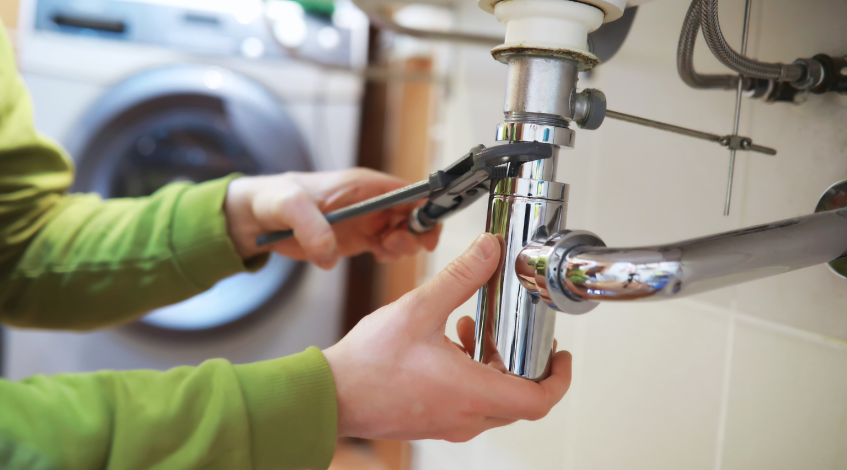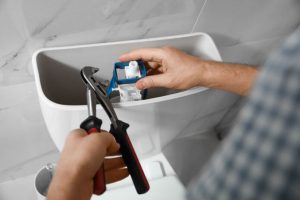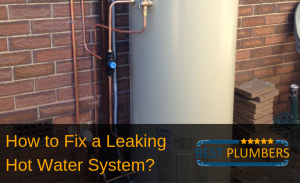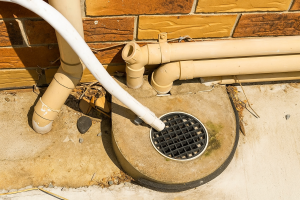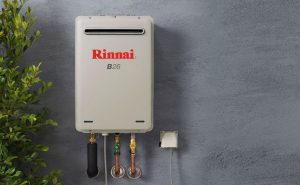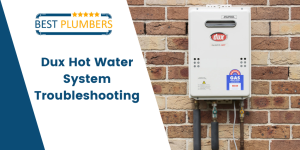Your home’s plumbing system is more than just pipes and drains.
Your plumbing system is what keeps your daily life flowing smoothly, from your morning shower to your evening dishwashing routine.
But when something goes wrong, everything can grind to a halt. So, what would you do first?
Plumbing problems can quickly escalate, turning minor annoyances into costly repairs. Knowing a few simple fixes can save you money and stress and knowing when to find the best local plumber can prevent things from getting worse.
Grab your plumbing tools and follow along with the Best Plumbers Club blog as we explore the most common everyday plumbing issues, what to do, and when to call your local plumber.
Key Takeaways:
- Long-term chemical exposure or setup errors can weaken your plumbing.
- Consider replacing old pipe fittings, insulating vulnerable pipes, and scheduling regular plumbing inspections to avoid future leaks.
- Avoid chemical cleaners unless necessary. They may hurt your pipes and won’t solve serious blockages.
Common Indicators Something’s Wrong With Your Pipes
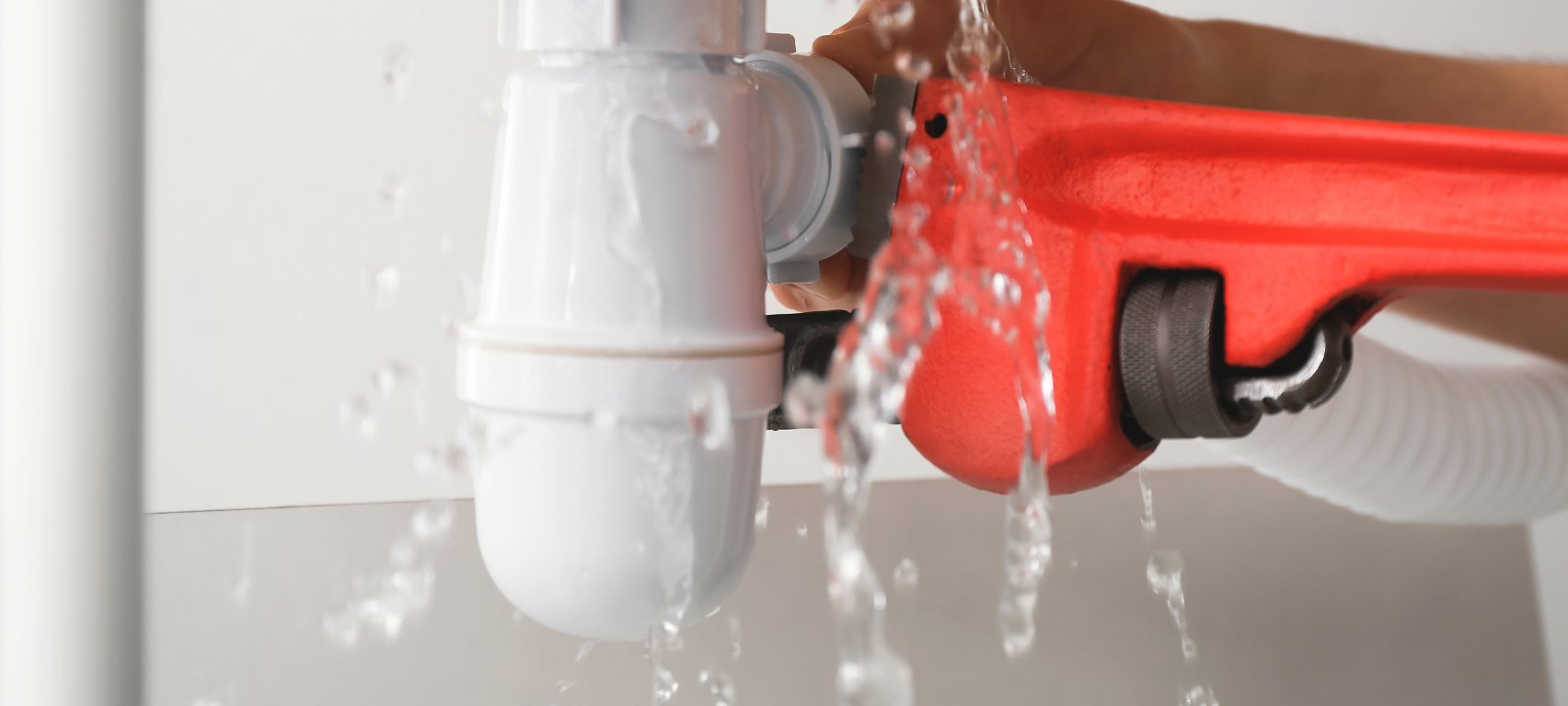
Plumbing issues can arise in any area of your home, and they’re usually the result of poor maintenance. Problems could also be traced back to design or manufacturing flaws, mistakes made during installation, or even long-term exposure to household chemicals.
Below is a brief list of symptoms to watch for that may indicate your plumbing system needs attention.
- Slow Draining Sinks or Showers – Water pooling is an early sign of a blockage.
- Low Water Pressure – A sudden drop in water pressure may point to a leak, buildup, or issue with your water main.
- Unusual Noises in Pipes – Banging or whistling sounds suggest air in the lines or pressure imbalances.
- Foul Odors Coming from Drains – Bad smells can indicate a blockage or buildup of organic material.
- Constantly Running Toilet – Caused by a faulty flapper or valve. It wastes water and raises your utility bill unnecessarily.
- Discolored Water – Brown or yellow water indicates rust in your pipes.
Quick Fixes for Minor Plumbing Problems
There are simple ways to check your plumbing without needing major work.
Focus on commonly exposed spots like under sinks and laundry tubs, behind access panels near showers or appliances, and around toilets, hot water systems, and other plumbing fixtures.
Examine all pipes, valves, and fittings in these locations. Most leaks occur at connection points, so pay close attention to joints near washing machines, refrigerators, dishwashers, water filtration systems, shut-off valves, and toilets.
Don’t overlook the appliances and fixtures themselves, as they can also fail or develop issues over time. Refer to manufacturer guidelines and stay current with any required maintenance.
Note that each type of plumbing material can show damage in different ways. Copper pipes may develop corrosion or pinhole leaks, while plastic pipes like PEX may show signs of cracking or discolouration.
Top Plumbing Problems – Solutions & Prevention

1. Leaking Taps
A typical leaking tap will show a consistent or occasional drip from the spout, even when fully closed, and may leave visible water buildup around the base. It could be that a damaged or worn washer needs replacing, and with the right tools, you can carry this out yourself.
Leaking taps may seem like a minor inconvenience, but over time, they can significantly increase your water bill and indicate underlying wear in your plumbing fixtures.
What to do?
- Turn off the water supply
- Turn on the tap to flush out any remaining water from the pipe
- Plug the sink so small parts don’t go down the drain
- Change the washer by removing the handle, the tap bonnet, and then the headgear. Take out the jumper valve and replace the washer.
Routine Maintenance for Leaking Taps:
- Replace washers and O-rings as part of routine tap maintenance.
- Avoid over-tightening taps, which can wear out internal components.
- Address small drips early before they worsen or damage fittings.
2. Smelly Drains
A smelly drain occurs when organic matter like grease, soap residue, food waste, or hair accumulates inside the pipes and begins to rot. This buildup produces a foul odor that spreads through the kitchen or bathroom. Although unpleasant, the issue is easy to resolve with simple cleaning methods. Regular maintenance can eliminate the smell and keep your home environment clean and hygienic.
What to do?
- Start by pouring a generous amount of near-boiling water down the drain.
- Then, add half a cup of coarse salt; the abrasive texture can help break up and dislodge built-up residue and odors.
- You can also use baking soda, lemon juice, and white vinegar to help break down organic residue and neutralize odors.
- Allow the mixture to sit for several minutes, then flush the drain thoroughly with hot water to clear any remaining buildup.
Routine Maintenance for Drains:
- Run hot water down the drain weekly to break down grease and buildup.
- Use a natural cleaner (baking soda and vinegar) monthly to freshen drains.
- Avoid pouring oil, grease, or food scraps down the sink.
3. Blocked Sinks
You may notice standing water that won’t drain, a gurgling sound when water tries to pass through, or even water backing up into the sink basin. This type of blockage needs prompt attention to prevent further plumbing damage or potential overflow.
If it has completely blocked sink drain, the problem has likely progressed beyond a simple odor issue and requires more intensive action.
A blocked sink drain is caused by a buildup of grease, food scraps, soap residue, or other debris that has accumulated over time.
What to do?
- Scoop out as much water from the sink as possible using a small container.
- Check for visible debris, such as food scraps or hair, and remove them using gloves or a tool like a wire hook.
- Pour half a cup of baking soda followed by one cup of white vinegar into the drain. Let it sit for 15–30 minutes, then flush again with hot water.
- Place a bucket under the sink, unscrew the P-trap, and clean out any debris inside.
Only use chemical drain cleaners as a last resort. Note that these products can damage pipes. Persistent clogs may signal a serious problem that requires professional repair.
Routine Maintenance for Sinks:
- Install sink strainers to catch food particles and debris.
- Regularly flush the drain with a mild degreaser.
- Avoid washing coffee grounds, rice, or fibrous vegetables down the sink.
4. Water Leaks
A water leak can range from a slow drip to a sudden burst. In more serious cases, you may see water pooling on the floor, damp patches on walls or ceilings, bubbling paint, or warped cabinetry.
You might also hear hissing or dripping sounds behind walls or under floors. Even a small leak can quickly escalate, leading to structural damage, and mould growth.
What to do?
- Turn off the main water valve to stop the flow. Grab towels or a bucket to catch and soak up the water. Use anything absorbent to stop the water from spreading.
- Check visible pipes, connections, or appliances to locate the source of the leak.
- If water is near electrical outlets, appliances, or wiring, switch off the power in that area to avoid electrical hazards.
- Take photos and videos of the leak and any water damage for insurance claims. This documentation can also help plumbers assess the issue.
- Open windows and run fans to dry out the affected space and prevent mould growth.
Consider replacing old pipe fittings, insulating vulnerable pipes, and scheduling regular plumbing inspections to avoid future leaks.
Routine Maintenance to Avoid Water Leaks:
- Check under sinks, around toilets, and near appliances for signs of moisture or loose connections.
- Place leak detectors near high-risk areas like hot water systems, washing machines, and under kitchen sinks to get alerts before damage spreads.
- Use a pressure regulator to keep levels within 40–60 psi.
5. Toilet Not Flushing
A toilet that fails to flush properly can be both inconvenient and uncomfortable, especially when waste or soiled water remains visible in the bowl.
The water may rise without draining, or the handle may feel loose or unresponsive. Most toilets operate on a simple mechanism, and in many cases, you can fix a toilet that won’t flush yourself.
What to do?
- When the flush button feels loose, check whether it has disconnected from the lift chain or actuator rod inside the cistern.
- Replace any component that shows visible wear or mechanical failure.
- Remove the cistern lid and inspect the float valve, lift chain, and flapper valve. Confirm that the chain connects properly. Replace the flapper if it doesn’t seal the valve tightly.
- Examine the inlet valve for signs of blockage or mineral buildup that could restrict water flow.
- Lift the float arm to confirm that it shuts off the water supply correctly. A faulty float can prevent the cistern from refilling.
- Use a plunger to build pressure. If plunging doesn’t resolve the issue, use a toilet auger to clear deeper obstructions.
Routine Maintenance for Toilets:
- Only flush human waste and toilet paper.
- Open the cistern every few months to check the flush mechanism, flapper, and lift chain.
- The isolation valve near the base of the toilet should remain open and free from corrosion.
6. No Hot Water
Discovering that there’s no hot water can be a major disruption. This issue points to a problem with the hot water system, such as a tripped circuit breaker, a faulty thermostat, a damaged heating element, or a gas supply interruption. In some cases, your hot water system may be leaking or past its service life.
What to do?
- Test multiple taps or fixtures to confirm the issue isn’t isolated to one location.
- For electric systems, check the circuit breaker or fuse box to see if it has tripped. For gas systems, check if the pilot light is on and the gas supply is active.
- Confirm the thermostat on your hot water unit is set to an appropriate temperature (usually around 60°C or 140°F).
- Inspect the pressure relief valve for signs of continuous leakage.
- Gurgling sounds from the tank may indicate sediment buildup or internal damage.
- If your hot water system is more than 8–10 years old, it may be nearing the end of its lifespan and require replacement.
If you’re unsure about any component, avoid dismantling the unit to prevent safety risks. If the system remains non-functional after these steps, contact a plumber for toilet inspection and repair.
Routine Maintenance for Hot Water System:
- Test the pressure relief valve every 6 months. A faulty valve can cause overheating or system shutdown.
- Drain a few liters of water and unscrew the anode rod for inspection. If it’s heavily corroded, replace it to prevent rust inside the tank.
- Wrap the tank and the first 1–2 meters of hot water pipes in insulation sleeves to reduce heat loss, especially during colder months.
7. Dripping Showerheads
A dripping showerhead is easy to identify. Even after the shower is turned off, water may continue to drip at a slow, steady rate for an extended period.
In quiet settings, the sound of the drip can become noticeably disruptive, particularly during the night.
You may also notice water stains, mineral deposits, or a damp wall near the shower area. Dripping showerheads stem from a worn-out washer, a faulty valve, or a mineral buildup preventing the shower from sealing properly.
What to do?
- Remove the showerhead and soak it in water to dissolve mineral buildup.
- Examine the internal washer or O-ring inside the showerhead or tap body. Replace it if it looks worn, cracked, or deformed.
- If the dripping persists, the valve behind the wall may be faulty or worn. May require replacement of some components.
Routine Maintenance for Showerheads:
- Check internal rubber components for signs of wear or cracking. Replacing them annually prolongs the life of your fixtures.
- After each shower, wipe the showerhead with a dry cloth to prevent mineral deposits and soap scum from hardening on the surface.
8. Drainage Plumbing
One of the most frequent issues in drainage plumbing is a blocked or collapsed pipe. This issue is usually caused by tree root intrusion, sediment buildup, or poor pipe installation. Drainage plumbing can include the following:
- Sewer – Wastewater from bathrooms, kitchens, and laundries. Directs to the main septic system.
- Stormwater – Manages rainwater runoff via gutters, downpipes, & stormwater pits.
- Subsurface – Uses systems like ag drains or French drains to control groundwater and reduce pressure
What to do:
- Book a CCTV drain inspection to locate the damage inside the pipes.
- Clear the blockage using high-pressure jetting or mechanical root cutting.
- Avoid tree planting near drains, installing root barriers, and scheduling regular maintenance with a licensed plumber.
Routine Maintenance for Drainage Plumbing:
- Clear leaves and debris from gutters, grates, and downpipes regularly.
- Book a drain camera inspection every 1–2 years to catch issues early.
- Flush indoor drains with hot water once a month to prevent buildup.
9. Leaking Toilets
You might notice water constantly rippling in the toilet. A steady trickling or hissing sound from the cistern may mean water is continuously refilling due to a faulty internal component. In some cases, water may pool around the base of the toilet, indicating a leak from the seal or a pipe connection.
Though it may seem minor, a leaking toilet can waste hundreds of litres of water per day and should be fixed promptly to avoid further waste or damage.
What to do:
- Turn off the water supply using the shut-off valve near the base of the toilet.
- Remove the cistern lid and check if the flapper, float, or fill valve is damaged.
- Adjust or replace faulty parts such as the flapper seal or float arm to stop the water from running.
Routine Maintenance for Leaking Toilets:
- Test for hidden leaks by adding a few drops of food coloring to the cistern. If color appears in the bowl without flushing, the toilet is leaking.
- Clean inside the cistern regularly to prevent buildup on moving parts.
- Check the base of the toilet for moisture to catch wax ring or seal failures early.
10. Low Water Pressure in Just One Fixture
Low water pressure in just one fixture means that only a specific tap is experiencing weak water flow, while the rest of the home’s plumbing works normally. This points to a localized issue rather than a problem with your main water supply.
Common causes include a blocked aerator, sediment buildup, a partially closed valve, or a faulty internal part in the fixture itself.
What to do:
- Test both hot and cold water to see if the issue affects one or both lines.
- Check the aerator or showerhead for clogs. Clean it to clear any sediment or debris.
- Replace the cartridge if it’s a mixer tap, as buildup inside can restrict water flow.
Routine Maintenance for Fixtures:
- Clean aerators every 3–6 months to remove mineral buildup.
- Check water pressure monthly to detect early changes in flow that could signal a blockage.
- Turn fixtures on and off if they’re not used often, to keep internal parts from seizing.
Conclusion
Plumbing problems are common, but with a little knowledge and routine maintenance, most can be managed before they turn into emergencies.
Don’t wait for problems to get worse. Make plumbing maintenance part of your routine to avoid bigger issues down the line.
Stay proactive, and don’t hesitate to call a licensed plumber when needed.
Get in touch with the best plumber you can find today. Your search for “local plumbers near me” ends today with the Best Plumbers Club. If you’re not confident tackling the job yourself or don’t have the right tools, contact a licensed local plumber to get it done safely and correctly. Best Plumbers Club connects you with trusted, reputable plumbers in your area.
Frequently Asked Questions
Does home insurance cover plumbing?
Accidental leaks, such as burst pipes or unexpected appliance failures, are covered under policies labeled as “escape of liquid.” Review your Product Disclosure Statement (PDS) to confirm what is covered under “escape of liquid” or “water damage.
How do you diagnose your plumbing problems?
Identify visible signs like leaks, water stains, slow drains, low water pressure, or unusual sounds from pipes. Check specific fixtures (toilets, taps, hot water systems) and monitor your water bill for unexpected spikes.
What are the common plumbing problems when it rains?
Heavy rain can cause blocked stormwater drains, sewer backups, foundation leaks, and overflowing gutters. It may also lead to water pooling around the home and pressure buildup in underground pipes.

